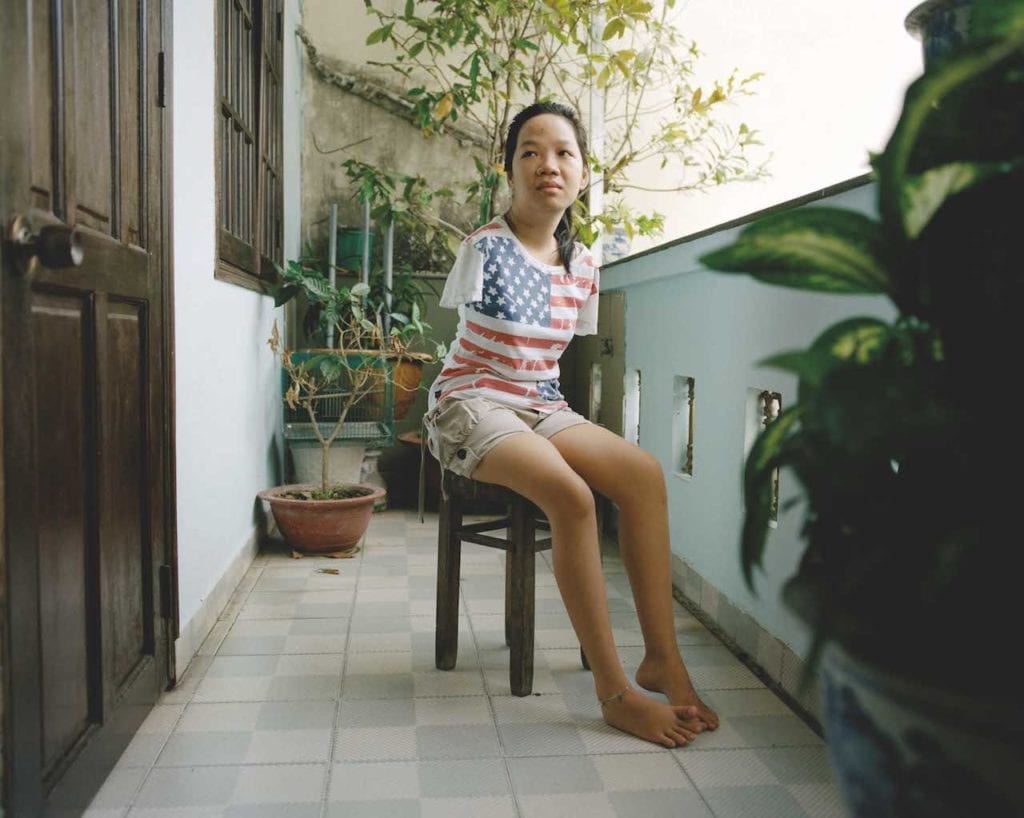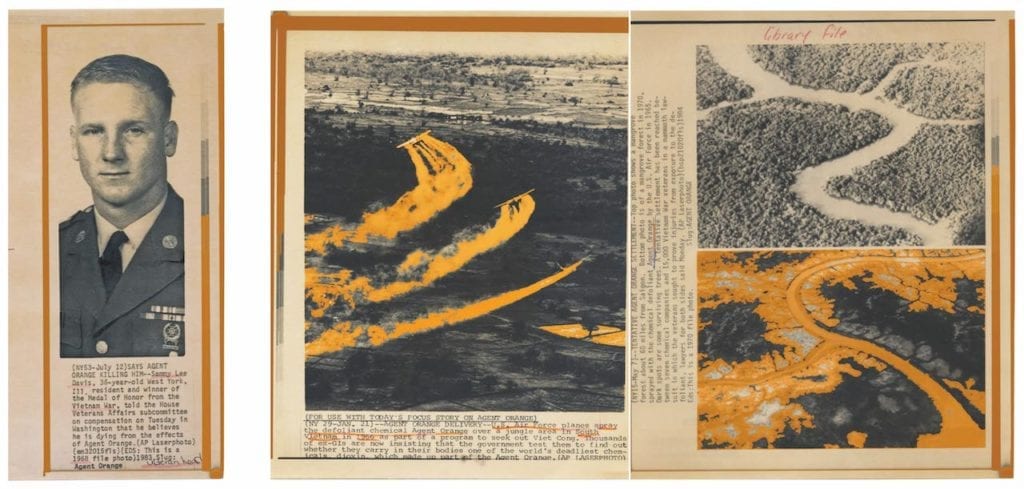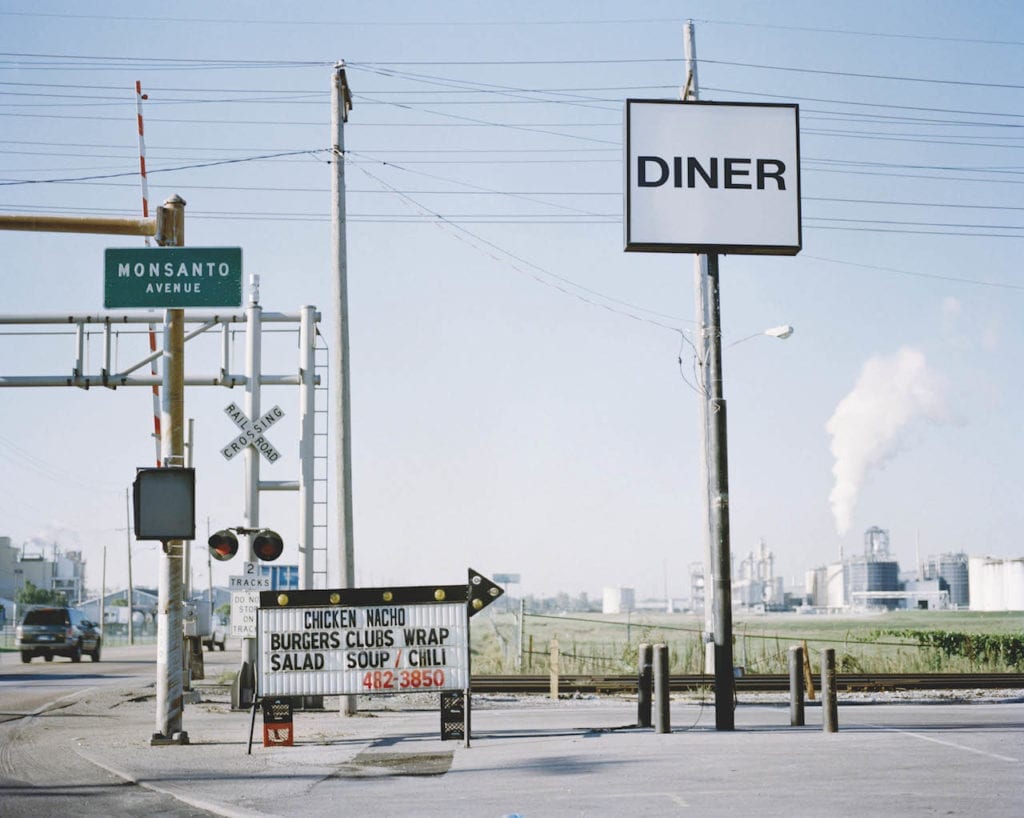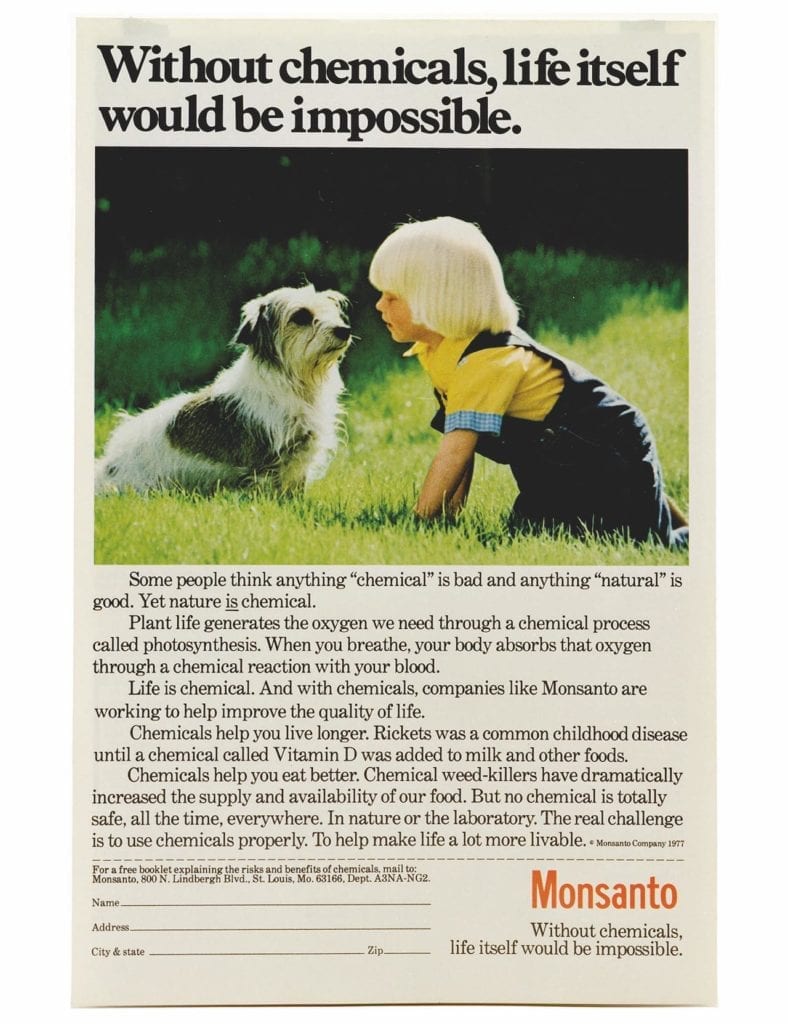“On s’engage, on va le faire” – that is, “We’re in, we’ll do it”. The New York-based, French-Venezuelan photographer Mathieu Asselin goes back and forth from Spanish to English to French as he recalls how Sam Stourdzé, the director of the Rencontres d’Arles, enthusiastically agreed to exhibit his five-year long, research-intensive project about the US chemical corporation Monsanto.
It happened a week before last year’s festival, and Asselin was then showing the dummy of his photobook, Monsanto®. A Photographic Investigation. This year the project is being shown at the Magasin Électrique at Arles, and the book has been published in French by Actes Sud, and in English by the Dortmund-based Verlag Kettler.
Asselin’s project is conceived as a cautionary tale putting the spotlight on the consequences of corporate impunity, both for people and the environment. Designed by fellow countryman Ricardo Báez, a designer, curator and photobook collector who has notably worked with the Venezuelan master Paolo Gasparini, Monsanto® submerges the reader into an exposé of the corporation’s practices, whether by showing contaminated sites and the health and ecological damage they cause, the effects of Agent Orange in Vietnam, or the pressure on farmers to use patented GMO seeds.

“My father [whose words are included in the book] talked to me about Monsanto eight years ago,” says Asselin, who immediately saw a story in what he was told. He also acknowledges Marie-Monique Robin’s The World According to Monsanto, a documentary film which was released in 2008, and published as a book by Éditions La Découverte and Arte in 2012. “Way beyond the pesticides, and the genetically-modified seeds, it was essential to understand the past of Monsanto,” says Asselin.
The author has seen the horror and, as the two central displays in his Arles exhibition show, the horror has a face – that of Agent Orange-affected infants preserved in glass containers for science at Tû Dû Obstetrics Hospital in Ho Chi Minh City, Vietnam. Asselin photographed them as well as living victims of Operation Hades, the original name for the US military operation that sprayed rural areas with Agent Orange during the war – Monsanto was one of the companies that produced the chemical, which was officially used as a defoliant. The most common caption reads: “Multiple genetics disorders and malformations”.

Several non-governmental organisations and civil society groups, such as the Children of Viet Nam Veterans Health Alliance and the Center for Food Safety, helped Asselin get in touch with victims, and with farmers affected by Monsanto policies. Each section in the photobook has an introductory essay, and rich captions provide the necessary context. The treatment is a testament to the power of words, as well as pictures.
“As a photographer, I am at the service of the story, and not the other way round,” says Asselin. “The story is the centre of this project, and not a mere complement. I lean on available tools: text, document, image appropriation, postal cards, objects… to make the story reach the public, its ultimate target. I have relied on existing research, but the challenge, from a photographer’s point of view, was to put all the Monsanto-related stories together and reveal how they are all connected.”
When the dummy was (unanimously) granted the 2016 Fotobookfestival Kassel Dummy Award, jury member Ruben Lundgren wrote: “The relevance of the topic is presented in a perfect package of photography, design and text. A rational kind of protest book, a true winner.” It also received a special mention in the Luma Rencontres Dummy Book Award 2016, with jury member Elisa Medde, managing editor of Foam magazine, praising it as a “strong and mature piece of work” with a “solid, multi-level editorial approach”.

As such, he includes some images in the book that move beyond straight documentary – those showing a river used for chemical dumping in the Poca River basin, West Virginia, and in Choccolocco Creek, West Anniston, Alabama. In these, colour has been applied to paint a Dantesque picture. “People in Anniston, who are now in their eighties, told me their childhood memories of swimming in the river, and how it would acquire a red, orange or purple colour [due to the dumping]”, he says. He decided that “memories, which are subject to change, could be represented by using acrylic paint on the photograph”.
Asselin thanks the director of the Rencontres d’Arles and the Chilean curator Sergio Valenzuela for “the total artistic freedom” he was granted in conceiving his exhibition. “I moved to Arles in February, so my exhibition was the first to be set up in the Rencontres,” he says – a factor that he believed allowed for an extraordinary connection with all the people involved.
Asselin also expresses his gratitude to Actes Sud. “A number of publishing houses showed interest, but they were afraid of possible retaliation,” he recalls. “Françoise Nyssen [who has since become the French minister of culture] and Jean-Paul Capitani, at the helm of Éditions Actes Sud, invited me over to have lunch and told me the same thing as Sam [Stourdzé]: ‘We want to do this, we are committed, we’re supporting you’.”
A Spanish version of the photobook is still to be confirmed, and the exhibition is expected to travel to other venues.
Mathieu Asselin is signing copies of Monsanto: A Photographic Investigation at Paris Photo at 4pm on 9th and 12th November on the Actes Sud stand https://programme.parisphoto.com/en/book-signings.htm The winners of the Paris Photo-Aperture Foundation Photobook Awards will be announced at 1pm on 10 November. https://programme.parisphoto.com/en/photobook-awards.htm
Monsanto: A Photographic Investigation is published in French by Actes Sud, and in English by the Dortmund-based Verlag Kettler www.actes-sud.fr https://www.verlag-kettler.de/en www.rencontres-arles.com/en https://mathieuasselin.com/


